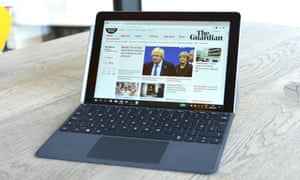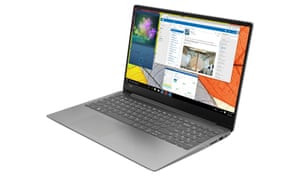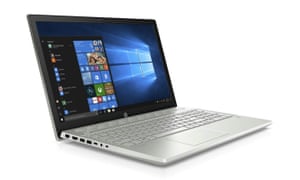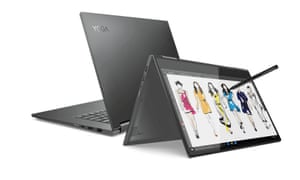I’m due to start my teacher training in September. Which laptop should I buy on a £500 budget? Ruqayyah
This question comes up every year. Obviously, the answers change as technology moves on. What doesn’t change much, if at all, is the general advice. You can get most of it from last year’s answer, though a brief summary might be useful.
First, check with your school, university or college to see if they have any particular software requirements, any recommendations, and any special deals with manufacturers offering laptops at a discount. Most offer Microsoft Office free, but ask if this includes the desktop programs. (The free Office 365 Education – yours for an academic email address – does not.)
Second, if you’re not doing any computer-intensive work such as video editing, almost any laptop with at least 4GB of memory and 64GB of storage will do the job. All the major brands have suitable laptops including Acer, Asus, Dell, HP and Lenovo. You could also consider a refurbished business laptop from Tier1Online, Morgan or similar source. If you take this route, I strongly recommend a ThinkPad from the X or T ranges with an Intel Core i5 or i7 processor, 8GB of memory and an SSD.
Third, think about peripherals. You’ll need an external hard drive for backups, though you should also store important files online. For ergonomic reasons, I recommend a laptop riser (or using a pile of books to lift the screen) and an external ergonomic keyboard for home use. It adds up.
Fourth, think about support. If you order a laptop online from Dell, HP or Lenovo, you may be able to buy three years of on-site support for a reasonable price. In Lenovo’s case, it can be as little as £61.56. Tier1Online also guarantees machines for three years for a small extra fee, but doesn’t provide on-site support.
How portable?

Do you want a laptop for use at home or in your digs/flat/etc, or one that you can take to lectures and use around campus? There is scientific evidence that students who make notes on paper learn more.
Traditionally, students have bought 15.6in laptops as desktop replacements. These machines are fast and cheap, but they are heavy to carry around, and tend to have short battery lives.
If you want to take a laptop with you everywhere, look for one with a 10in to 12in screen. Some models double as touch-screen tablets. Some work with a pen or stylus for limited note-taking, drawing diagrams and annotating documents. Microsoft’s Surface Go is a worthy contender.
Laptops with 14in screens are a good compromise. New ones have thin bezels so they are no bigger than old 13.3in laptops, and they generally have Full HD (1920 x 1080) instead of HD (1366 x 768) screens. Most are small and light enough to carry around at least part of the time.
You can compare 14in and 15.6in laptops at any good computer store or a department store such as John Lewis.
I think a 14in laptop is a good choice for most university and college students, but it may not be the best choice for you.
15.6in options

If you decide to buy a 15.6in desktop replacement, the IdeaPad 330S 15 has the power. Lenovo is offering two models with fast AMD Ryzen processors, 8GB of memory, 256GB PCIe SSDs, 1920 x 1080-pixel anti-glare IPS screens and decent keyboards. The cheapest 81FB006QUK has a Ryzen 3 2200U in a rose pink case for £409.99, but it’s worth paying £479.99 for the midnight blue 81FB002LUK with a faster Ryzen 5 2500U and Radeon Vega 8 graphics.
These machines are quite sleek, relatively light (from 1.87kg), and good value for money. The screens are not great, and battery life can be quite poor, but they are within your budget and should cruise through anything you are likely to throw at them.
Currys PC World sells a version of this machine for £399, but it only has half the memory (4GB) and half the storage (128GB), so it’s not such a good deal. Also, avoid the £379.99 Argos version with 4GB of memory and a 1366 x 768-pixel screen. However, Argos offers more than a dozen versions of the IdeaPad 330S, so you might find one that suits you.
The HP Pavilion 15 is in some respects a nicer machine, with a better screen and better battery life (up to 11 hours). John Lewis has a version with an Intel Core i3-8145U – which would be fast enough for your needs – plus 8GB of memory and a 256GB SSD for £499.95. It’s currently out of stock, but other suppliers have very similar models.
14in laptops

The Pavilion range has improved since HP spun off its PC and printer divisions into a separate company, HP Inc, in 2015. Last year, it sold almost as many PCs as Lenovo (56m v 58m) thanks partly to the latest Pavilion laptops, launched in April last year. They have a more premium look and feel, and their metal keyboard decks are distinguished by a geometric grid pattern (speaker grilles) between the keys and the screen.
Laptops that sell in large volumes, like the HP Pavilion 14 and Lenovo’s IdeaPad 330S, are available in lots of slightly different versions. This can be confusing, but if you focus on the specifications you care about, you can get the best balance between processor speed, storage and price. I’m linking to Currys PC World for convenience, but you can shop around.
The best Pavilions for just under £500 are the 14-ce2500sa (Core i3-8145U, 8GB, 512GB SSD) and the 14-ce1510sa (Core i5-8265U, 8GB, 128GB). Personally, I’d go for the extra speed of the Core i5, unless you have a particular need for the extra storage space.
You could save £50 by going for the 14-ce1507sa (Core i3-8145U, 8GB, 250GB SSD) for £449. This is slower but should comfortably do what you need. However, you will get worse performance if you drop down to the 14-ce0593sa (Pentium Gold 4415U, 4GB, 128GB SSD) at £379, and you can’t upgrade the processor later.
Typically with these machines, you can remove the single memory module and replace it with a 16GB module. You can also upgrade the M2 SSD, or install a 2.5in SSD. However, if you plan to do either, check the specific model beforehand to make sure it can be upgraded.
The Asus VivoBook 14 X420UA is another attempt at providing a premium-styled product at a mainstream price. John Lewis has a version with a slightly old Core i3-7020U for £399.99 (or £349.99 on Amazon), but it’s let down by its 4GB of memory. Of course, an ultra-thin ZenBook like the UX410UA (£499.99) is the Asus of choice.
Take a touch

With its Yoga range, Lenovo pioneered laptops with 360-degree hinges that rotate for tablet use. I still love the orange (sorry, clementine) 11.6in Yoga 700 I bought for £339.99 in 2016: it’s light enough to take everywhere, though it’s backed up by a desktop PC for serious use. They are usually more expensive now. The cheapest I can see today is an 11.6in Yoga 330 for £299.95, “reduced to clear” at John Lewis, and that’s blighted by its slow Intel Celeron N4000 processor.
Better options include the slightly-less-portable 14in touch-screen Yoga 530 available from Lenovo with what I assume is a Pentium Gold for £379.99, or a Core i3-8130U for £469.99. Currys PC World also has this model for £469. It works with an active pen, not supplied.
All these Yoga 530s have 4GB of memory. The 4GB module could be swapped for an 8GB (£35.99) or 16GB module (£69.59) but it looks like a fiddly process (see page 41 in the manual). It would be better to bust your budget by going for the more powerful Ryzen 5 version with 8GB of memory and a 256GB SSD for £549, or the rival HP Pavilion x360 14-dh0020na.
Think of it as £3.50 per week over three years and it won’t sound so bad. It’s not a lot compared with the cost of fees, travel and general living expenses.
Have you got a question? Email it to [email protected]
This article contains affiliate links, which means we may earn a small commission if a reader clicks through and makes a purchase. All our journalism is independent and is in no way influenced by any advertiser or commercial initiative. By clicking on an affiliate link, you accept that third-party cookies will be set. More information.
















